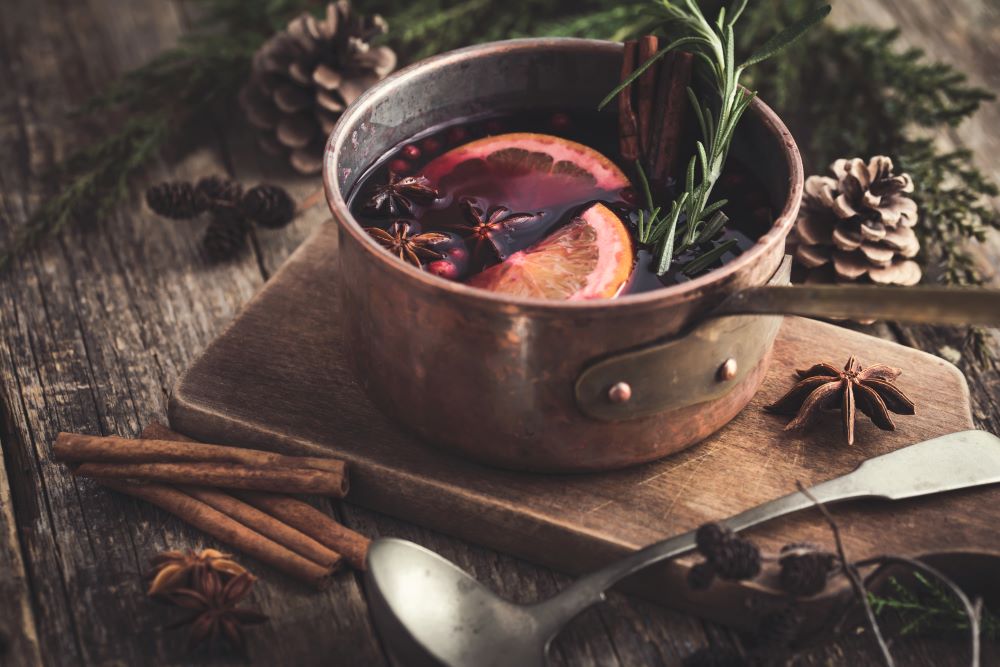
Today I want to touch on a fermented drink that has been consumed worldwide for centuries. A beverage so widely used it’s hard to find a modern culture that doesn’t have a place for it…
I’m talking about wine.
Now, I don’t really drink much alcohol but I do enjoy a glass or two of wine every now and then. I found myself curious if wine is as healthy as some folks claim, so I dove deep into this ancient tradition to uncover the truth.
Before we dive in, I want to preface: if you have a family history of alcohol abuse or any other reason that you cannot drink wine, please go with that gut instinct – there are plenty of other ways to get the healing benefits below.
Ok, let’s get into it.
Wine culture is so old that historians have found evidence of wine consumption dating back thousands of years BCE in ancient China, Greece, Lebanon, Egypt, and many other old-world countries. This versatile drink was (and still is) used for ceremony, celebration, religious reasons, and simply because its complex flavors and symbology set it apart.
If you’ve ever tasted wine, you may have noticed that “bite” in every sip. That kick you’re noticing comes from the polyphenols, which are loaded with the antioxidants that red wine is known for.
“Antioxidant” has been a buzzword in the wellness world due to the sheer power they have in helping you maintain a healthy immune system. Antioxidants can prevent inflammation and illness by fighting off free radicals that cause oxidation and damage to your cells.
How antioxidants work to keep you healthy: Any toxin that enters your body — be it from cleaning sprays, car exhaust, or preservative-packed foods — comes with the chance of oxidizing your cells. This means that over time, these chemicals go around taking electrons from your healthy cells, which damages the structure of the cell and speeds up its aging process. Oxidized cells are linked to a number of different cancers and other illnesses like heart disease, arthritis, and neurological disorders.
To find balance again, oxidized cells search for replacement electrons and steal them from healthy cells. The oxidation/electron-stealing cycle keeps going on and on until it’s met with an antioxidant – which has extra electrons to spare and can stop the oxidation process!
One of the dominant antioxidants in wine is called resveratrol, which comes from the skin of grapes used to make wine. Resveratrol is produced in grape plants to help them adapt to environmental stressors and also provides anti-aging qualities by reducing the number of free radicals in the grapes. This potent antioxidant is widely known as the main cause of red wine’s cardioprotective tendencies.
(Sorry white wine fans – you won’t get the same healing benefits from a Chardonnay as you would a Merlot. White wine also has resveratrol, but red wine contains higher levels of the antioxidant – red wine grapes ferment in their skins longer!)
Resveratrol, along with other constituents in red wine, also increases the levels of good cholesterol in your system and protects against buildup and the hardening/blocking of your arteries that can eventually lead to heart attacks. Resveratrol also has strong anti-inflammatory and anticoagulant properties, which can lower your risk of more serious heart diseases that usually end in surgery.
Don’t get me wrong – resveratrol is not a free pass to go wine-crazy. Just like anything else, too much of a good thing becomes a bad thing. The “recommended” amount of wine is 1-2 glasses per week.
If you’re thinking that moderately drinking wine is something you want to start doing with clear intentions, I have a holiday twist for you to try: my recipe for mulled wine.
Also knowns as glühwein or glögg, this ancient European drink is jam-packed with medicinal herbs that put the healing effects of wine over the top (while also cooking out a little bit of the alcohol).
The citrus in this recipe is a quintessential digestive bitter that kick starts digestion, while the cardamom has an affinity for gut health. It’s so strong that it can heal and prevent ulcers! The cinnamon acts as an aphrodisiac (wink wink) and relaxant, and the cloves are a natural pain-killer that fight off bacterial and viral infections. The star anise is antispasmodic in nature and loosens up any phlegm if you’re feeling sick – that’s why Germans add it to their Hot Toddies.
Convinced you need to give this a try? Check out the recipe below!
Healing Holiday Mulled Wine
I find that this recipe is super easy to tweak to your preferences. To be perfectly honest, I usually measure with my heart when I make this, but below are the suggested amounts.
Ingredients:
- 1 bottle of dry red wine (personally, I like a merlot)
- 1 orange sliced into rounds
- 1 lemon sliced into rounds
- 1 small handful of cinnamon sticks
- 4-6 whole cloves
- 1-2 star anise
- 2-3 pods of cardamom
- *Optional sweetener: maple syrup or honey to taste
- *Optional liqueur: brandy or spiced rum to taste
Instructions:
- Add all ingredients into a large pot
- Warm on your lowest setting for at least 1 hour
- Strain out spices and fruit
- Add optional ingredients if using
- Serve warm
- Garnish with an orange peel and a cinnamon stick
*If you want to try this recipe without the alcohol, substitute the wine for half grape juice, half cranberry juice (low sugar is best).
Stay curious,
Nick Polizzi
Host of Remedy: Ancient Medicine for Modern Illness
& Founder of The Sacred Science
The post A Heart-Healthy Holiday Beverage appeared first on The Sacred Science.

No comments:
Post a Comment